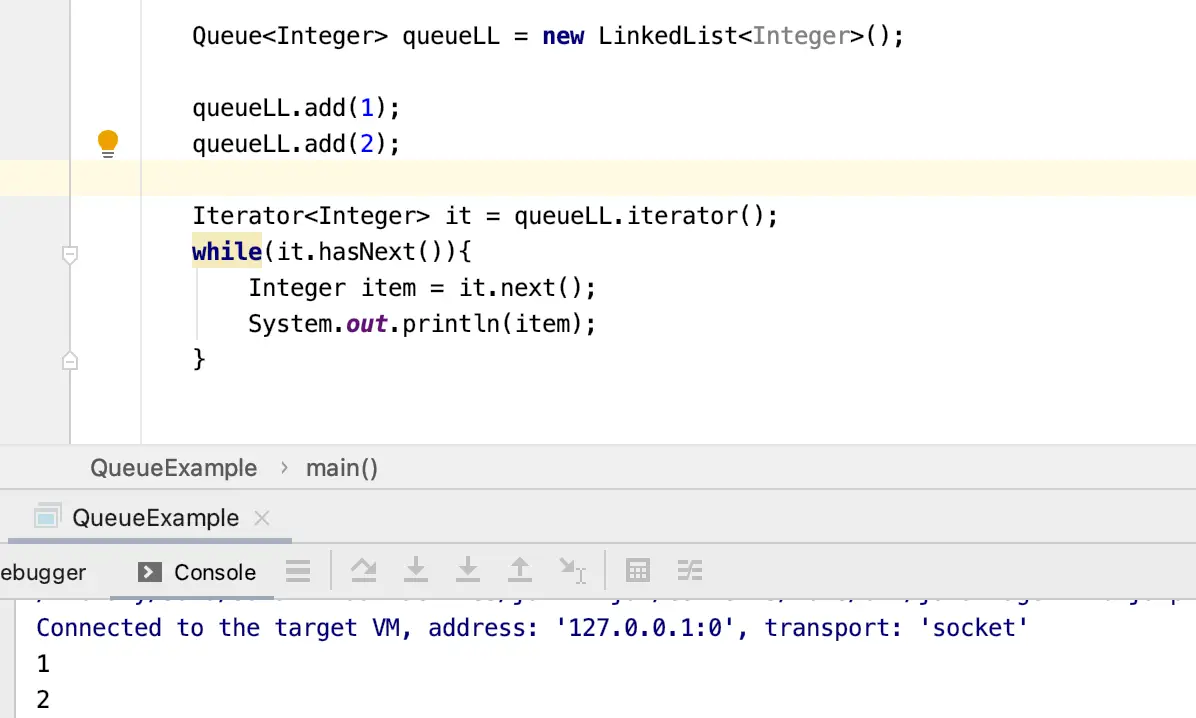

These methods which are defined under are further prepared in the succeeding versions of the Java programming language. Note - In Java SE 8, there are no changes made in the Java queue collection. Some of the operations of the Java queue raise an exception whereas some of these operations return a particular value when the program is completed. The Queue interface promotes different methods like insert, delete, peek, etc. In the Java queue, there are many methods that are used very commonly. The interfaces that are used to implement the functionalities of the queue are given as follows: The Java interfaces are also used in the implementation of the Java queue. Interfaces used in implementation of Queue

The classes that are used to implement the functionalities of the queue are given as follows: Implementation of Queue Classes used in implementation of Queue In Blocking queues, if any work similar to null values is tried, then the NullPointerException is also thrown.

Blocking Queues do not support null elements.The Blocking Queues are used to implement the producer-consumer queries. Blocking Queues are also one of the types of queues that are also thread-safe.The deque is also considered thread-safe.The Deque or (double-ended queue) is also a type of queue that carries the inclusion and deletion of elements from both ends.The Queues that are a part of the java.util package are known as the Unbounded queues and bounded queues are the queues that are present in package. There are two types of queues, Unbounded queues and Bounded queues.Other than these two, there is a class that is, Array Blocking Queue that is used to implement the Queue interface.These classes are LinkedList and PriorityQueue. There are two different classes that are used to implement the Queue interface.The Java Queue interface gives all the rules and processes of the Collection interface like inclusion, deletion, etc.It indicates that elements are entered in the queue at the end and eliminated from the front. Java Queue obeys the FIFO (First In, First Out) manner.The significant properties of the Java Queue data structure are given as follows: Java Queue is attractive because of its properties. The Java Queue can be considered as one of the most important data structures in the programming world. In Java programming language, there are two different classes which are used to implement the Queue interface. If a user wants to implement the functionality of the Queue interface in Java, then it is mandatory to have some solid classes that implement the Queue interface. Public interface Queue extends CollectionĪs we have discussed above that the Queue is an interface, therefore we can also say that the queue cannot be instantiated because interfaces cannot be instantiated. The generic representation of the Java Queue interface is shown below: It also extends the Collection interface. The Queue is an interface in the Java that belongs to Java.util package. Components are added inside the queue from the rear end of the queue and the components are extracted from the front end of the queue. The following figure perfectly describes the FIFO (First In, First Out) property of the Java queue.Īs explained in the preceding image, we can see that the queue is a linear data structure with two terminals, i.e., start (front) and end (rear). Queue has two ends that is front and rear. There are two ends in the queue collection, i.e., front & rear. The components in a queue are stored in a FIFO (First In, First Out) behavior. In simple words, we can say that the queue is a type of data structure in the Java programming language that stores elements of the same kind. A queue is another kind of linear data structure that is used to store elements just like any other data structure but in a particular manner.


 0 kommentar(er)
0 kommentar(er)
